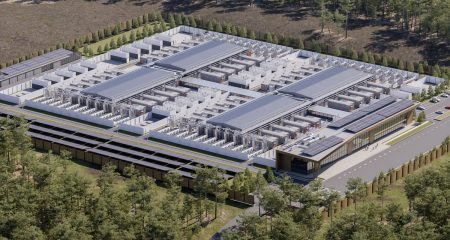 Today’s hybrid world has fundamentally reshaped the landscape of business. Between market changes, working from anywhere and evolving customer behaviours, the push towards digital transformation has never been stronger, and there is no turning back.
Today’s hybrid world has fundamentally reshaped the landscape of business. Between market changes, working from anywhere and evolving customer behaviours, the push towards digital transformation has never been stronger, and there is no turning back.
Organisations across the board have sped up the process of digitising customer interactions, supply-chain operations and internal processes, effectively compressing what would typically take three to four years into a much shorter timeframe. Moreover, IT leaders find themselves and their teams working hard to support their organisations’ transition to remote work and the rapid virtualisation of products and services.
However, for small to medium-sized enterprises with limited budgets, the complexity of managing all of this while ensuring productivity, business continuity and the uninterrupted operation of critical business systems can be an expensive exercise.
Modern challenges
After all, even small IT teams are tasked with managing an intricate and expansive IT infrastructure. This includes a complex mix of on-premises and colocated sites, public and private cloud resources, and a rapidly growing presence at the edge.
This strategic move naturally aimed to facilitate remote workforces, expand digital services and bring computing resources closer to end-users for an enhanced experience. Today, the pursuit of cloud has transformed into a fast-paced sprint.
The demand for data centre space and edge sites is also experiencing unprecedented growth. These days, billions of rands are spent on storage annually, whether on-prem, in colocation facilities or through hyperscalers, and demand shows no signs of slowing down.
Concurrently, a surge in edge demand is presenting many opportunities. Regardless of how “edge” is defined, the fundamental components of compute, storage and networking play a pivotal role in supporting data creation, analysis and management beyond the traditional core infrastructure. A future is unfolding where extraordinary value and opportunities for essential products and services are being forged by a diverse array of technology ecosystem stakeholders.
Growing complexity
In addition, IT teams are grappling with the ever-growing complexity of managing a diverse range of hardware and tools. This includes servers, desktops, storage devices, networking equipment, racks, sensors and IoT devices. Many of these come with vendor-specific tools, amplifying the intricacies of management. SMEs are finding it challenging to keep pace with the slew of tools in an industry that values speed, simplicity and scalability.
 Moreover, against a backdrop of skyrocketing user expectations and evolving business requirements, IT teams are now tasked with managing more devices and sites than ever before. For those relying on manual processes, the challenge of keeping up with this increased demand is very real. Also, the potential for manual errors grows as staff responsibilities multiply, and misconfigured devices could introduce security vulnerabilities into the environment.
Moreover, against a backdrop of skyrocketing user expectations and evolving business requirements, IT teams are now tasked with managing more devices and sites than ever before. For those relying on manual processes, the challenge of keeping up with this increased demand is very real. Also, the potential for manual errors grows as staff responsibilities multiply, and misconfigured devices could introduce security vulnerabilities into the environment.
A robust management platform for SMEs
This is why many SMEs are turning to robust management platforms solutions to address these challenges and support today’s hybrid workforces. A good platform will bring the data visibility, device access and automated processes that SMEs need to increase speed, accuracy and scale, enabling them to handle more users, devices and locations than before without compromising quality or responsiveness.
Vertiv, brought to South Africa by Tarsus Distribution, offers the Avocent ADX Platform. This platform is specifically designed to assist smaller companies in overcoming challenges and maximising their potential in a remote work environment. It is especially useful in a world where everything is becoming digital.
This solution is robust and scalable, featuring a management platform, rack manager, interface modules as well as a serial console. Any IT team can use Vertiv Avocent ADX Platform to monitor and control their IT infrastructure remotely and securely.
Automation and security
The platform helps by automating device management processes and streamlining deployment timelines, which enhance SMEs’ business agility. Furthermore, by automating tasks such as firmware updates, configuration changes and status reporting, they not only save valuable time but also boost overall efficiency. This efficiency gain allows you to allocate their IT teams to higher-value tasks, ultimately delivering a superior return on investment.
It also helps SMEs to improve the end-user experience. For example, faster video performance, elimination of subpar video quality and glitches, and seamless functioning of online meeting and collaboration tools are now within reach for small companies, too.
And because data security and privacy are top concerns for businesses of every size, SMEs can use Vertiv to safeguard their IT infrastructure by preventing unauthorised access to devices and tightly controlling the actions sanctioned users can execute.
Supporting future growth
Business demands are growing quickly and changing rapidly, fuelling the need for a different approach to IT management.
Luckily, SMEs can now tap the power of Vertiv Avocent ADX Platform to support their growth, streamline IT management, bolster security, support users, and provide the uptime and responsiveness that today’s smaller firms require.
Contact Tarsus Distribution for this solution that will deliver the responsiveness and uptime your organisation seeks to power business growth.
- Read more articles by Tarsus Distribution on TechCentral
- This promoted content was paid for by the party concerned




